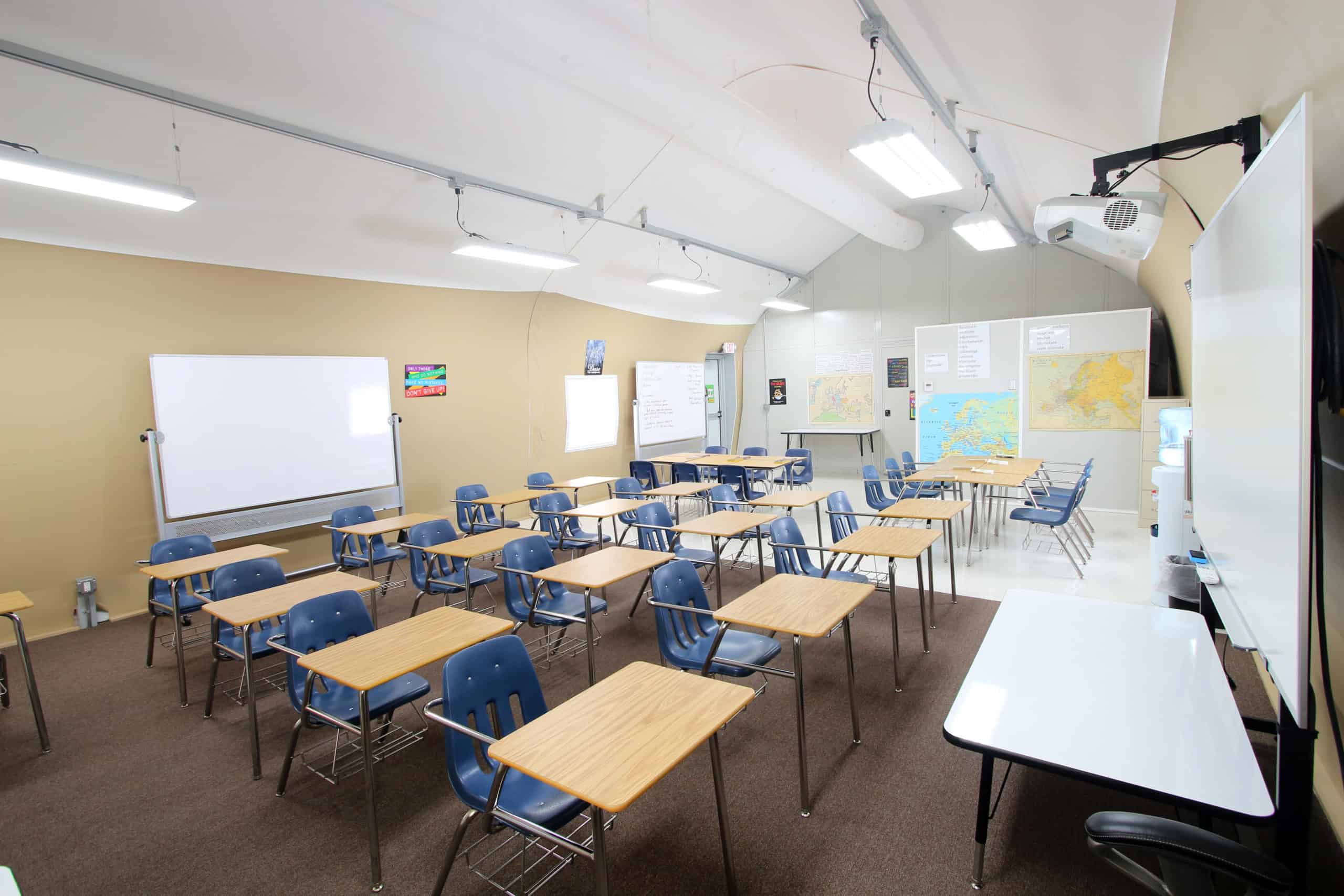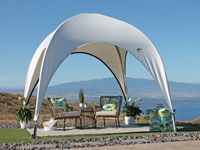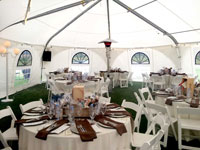Will schools reopen this fall? That has been the question on everyone’s minds over the recent months as cases of COVID-19 rise and fall. Despite the fact that cases have nearly returned to April’s peak levels, many schools are now confirming that they will indeed reopen amid growing pressure from multiple parties — including the federal government.
This means that schools wanting to reopen as safely as possible need a deliberate reopening plan, which will likely include the use of portable classrooms to promote social distancing.
The CDC’s Recommendations for Reopening Schools During The COVID-19 Pandemic
COVID-19 has changed life in numerous ways over the recent months, not the least of which being the way that we interact with others. The more people we interact with, and the longer the interaction, the higher the risk of being exposed to or spreading the disease. While eliminating all risks of contracting the coronavirus is nearly impossible, it is everyone’s duty to reduce contact as much as possible to balance risk with reward.
This is also true for schools as they consider reopening plans while weighing the benefits and drawbacks of going completely online, alternating times or days of the week, or returning in the fall with a normal schedule and full occupancy. The Centers for Disease Control and Prevention (CDC) outlines the varying levels of risk for students, teachers, and faculty looking to reopen schools during the coronavirus pandemic as follows:
- Lowest risk: All classes, activities, and events are restricted to virtual meetings.
- More risk: In-person classes, activities, and events are held in small groups. These groups stick together, stay with the same teacher, and do not mix with other groups across school days. Students stay at least 6 feet away from each other and refrain from sharing supplies.
- Highest risk: In-person classes, activities, and events are held as usual, with regular group sizes, no spacing, shared supplies, and group mixing.
While the highest-risk option should be heavily considered due to health concerns, many schools are also against going with the lowest-risk option. Full-time distance learning (virtual schooling) presents challenges related to distracting home environments, equipment and Wi-Fi, childcare, proper nutrition, and child abuse.
For that reason, many schools are choosing to go with the medium risk category, balancing the benefits of classroom learning with strict hygiene and social distancing measures to prevent the spread of coronavirus. Maintaining these measures will be crucial to preventing an outbreak and ensuring ongoing quality education. To reiterate, schools need to:
- Modify layouts so that desks are spaced at least 6 feet apart and facing the same direction.
- Close communal spaces such as cafeterias and playgrounds.
- Practice cohorting so that groups of students and staff stay as static as possible and do not mix.
- Discourage sharing of supplies and other items — especially those that are difficult to disinfect or clean.
[Related: Social Distancing Measures to Help Reopen Schools]
How Portable Classrooms Can Help Schools Reopen During COVID-19
Schools can close communal areas by pausing extracurricular activities (including recess) and having students eat in their classrooms. Keeping groups separate from one another and preventing supply sharing should also be fairly achievable.
The biggest challenge will be to keep students 6 feet apart from one another. Spreading kids out means that existing classrooms won’t be large enough to accommodate regular class sizes. The obvious solution is to reduce class sizes, but where will the extra students go?
Portable classrooms are an ideal option for creating additional classroom space for social distancing during and post-COVID-19. While typical construction would take too long and be hard to justify financially, modular classroom structures offer quick assembly so schools can have additional space ready for the first day of school — and at a much more cost-effective price.
What’s more, portable classrooms provide many long-term benefits that will far outlast schools’ pandemic-related needs:
- Space for increased enrollment: Has enrollment been increasing in your school district? If increased enrollment is at all likely for your school, portable classrooms may provide much-needed space for longer than the current crisis.
- Swing space for construction: Construction often impacts access to school buildings. If your school district has plans for construction in the near or not so near future, modular buildings could serve as ideal swing space for the interim.
- Multipurpose space: If you end up not needing additional classroom space long-term, portable classrooms can easily be repurposed to meet other needs, such as space for teachers lounges, administrative offices, extracurricular activities, and more. These portable structures can be relocated to any location on the school’s campus, or even disassembled and stored for future needs.
Of course, not all modular classrooms are created equally. To ensure that the space will meet CDC recommendations during COVID-19, be sure to look for a portable classroom that has:
- Adequate space: After all, students need to stay 6 feet apart, which is much further than most classrooms can accommodate. Look for a modular classroom with a wide-open, spacious layout.
- Multiple exits: Education Week also recommends designating separate entrance and exit doors to reduce crowding in doorways. Portable classrooms should ideally have at least two doors to make this possible.
- Proper ventilation: The CDC emphasizes the importance of proper ventilation to prevent transmission via droplets that float in the air. To ensure adequate ventilation, look for a modular classroom with a well functioning HVAC system and windows that open to allow outdoor air to circulate.
[Related: Temporary School Structures in Saipan Deployed for Disaster Recovery]
Portable Classrooms
Schools that are looking to expand their available classroom space for reopening this fall during the COVID-19 pandemic and enable social distancing will find fabric buildings from Alaska Structures® the most ideal modular classroom solutions available.
Fabric structures engineered by Alaska Structures promote social distancing with the following features:
- Two separate classrooms measuring 24 feet wide by 80 feet long combined, providing ample space for desks to be spaced 6 feet away from one another
- One entrance and two emergency exits that can be repurposed as regular exits to prevent bottlenecks in doorways
- A central utility room with space for a food prep area, refrigerator, sink, and washer/dryer so that classes can eat lunch in the portable classroom and avoid mixing with other groups in the cafeteria
- Four large windows to allow for the circulation of outdoor air as well as an optional HVAC system (can also be equipped with HEPA and UV germicidal filtration units)
Our fabric structures are virtually maintenance-free after installation and are one of the most energy-efficient portable classrooms available. The typical maintenance and operating costs of other temporary classrooms are incomparable. The building system also comes with an ADA-compliant ramp, a proprietary insulation system that maintains a comfortable learning environment even in the harshest of climates, and an optional power generation and distribution system.
Once your school no longer needs to reduce its class sizes to promote social distancing, you can easily relocate our fabric structures anywhere on campus or even to another school in your district to meet changing needs — for administrative offices, teachers’ lounges, training rooms, childcare facilities, research labs, multipurpose rooms, and more.
Our fabric buildings are designed to be relocated, quickly taken down, and packed into a small cube for easy transport or storage until a new need arises.
[Related: The Best School Buildings for Modular Classrooms]
Additional Portable Buildings for Reopening Schools
Alaska Structures also offers a number of other building solutions that may be helpful for schools that are trying to reopen during COVID-19:
- Lunch rooms: The CDC recommends having students bring their own lunches and eat at their desks as feasible to discourage mixing of groups. If that’s not feasible for your school, consider adding another smaller cafeteria to your school’s campus to limit the amount of people that will be in the space at any given time. Alaska Structures provides dining facilities in a wide range of sizes to meet your school’s specific needs.
- Gymnasiums: Limited shared use of spaces such as gymnasiums is also recommended, yet physical activity is essential for students. Adding an additional gymnasium to your school can help limit mixing between groups while still giving students’ their much needed time to stretch their legs. Alaska Structures offers gymnasiums ranging to any width.
- Portable bathrooms: Need additional bathrooms for your main school building to limit crowding in existing facilities? Alaska Structures’ hygiene facilities can be equipped with as many portable toilets, urinals, and sinks as your school requires. They can also be equipped with portable showers and lockers.
Let’s Discuss Your School’s Reopening Plan Today!
To learn more about our fabric structures such as cafeterias, gymnasiums, bathrooms, and other school building solutions, we encourage you to reach out to one of our knowledgeable building specialists today! We’d be happy to discuss your school’s unique needs and how our building solutions can help you reopen safely.
Telephone: +1-907-344-1565
Or use our online contact form and submit your request.

















































































Leave a Reply